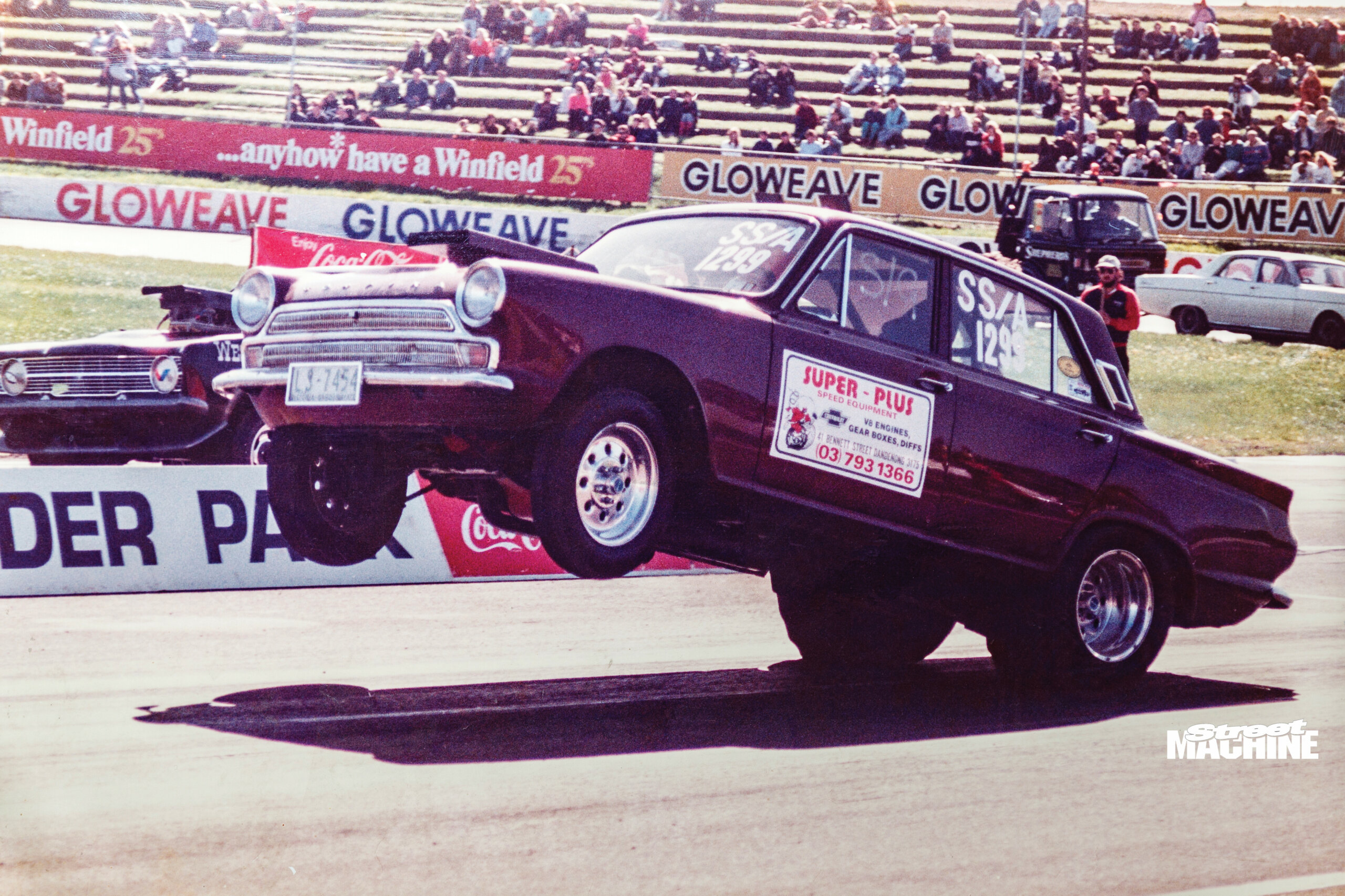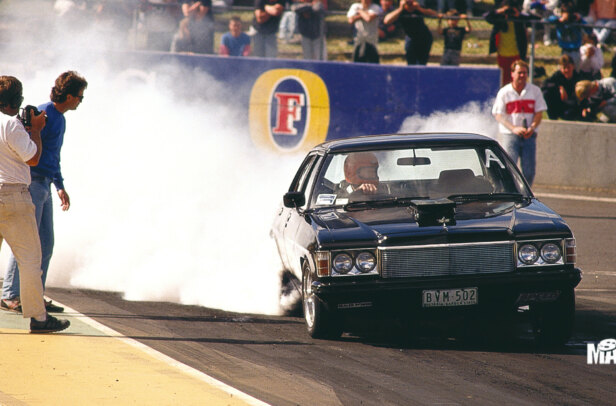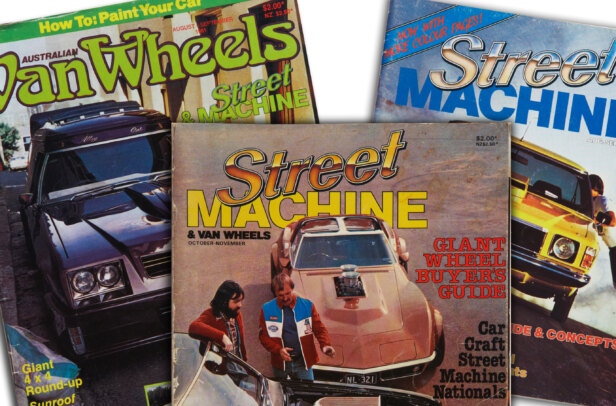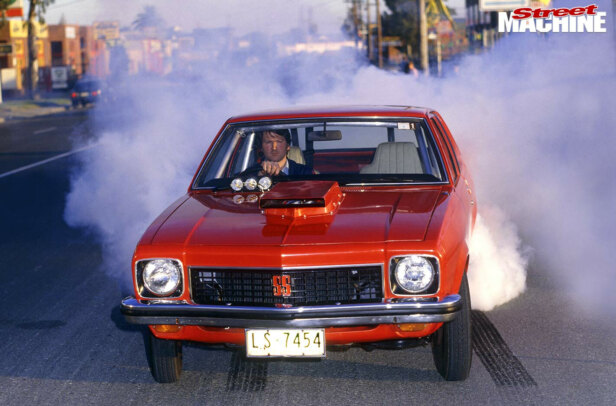Geoff Paton’s tyre-frying big-block Torana (SM, Aug-Sep ’85) is the stuff of legend. It was a full street car that ran 9.9@137mph – off-the-charts quick for the mid-80s. Geoff’s wheelstanding, national record-holding Cortina is equally famous; in the June 1987 issue of Street Machine, then-features editor Ewen Page was strapped into the Pommy beast to witness first-hand what a nine-second pass felt like.
First published in Street Machine’s Yearbook 2021
In 1989, Geoff hit the headlines again when he won the inaugural Australian Street Machine Drag Racing Championships at Calder Park in a black, big-block HJ sedan. The following year, he fronted up to the next big shootout at Calder and made the final. Unfortunately, the car popped a trans line, robbing him of victory.
As well as being an early icon of pro streeting in Australia and a racer of some note, Geoff also owned the famous Super Plus Speed Shop in Melbourne.
By the end of 1992 though, Geoff had pretty much walked away from racing and cars altogether, so we thought it was high time to reach out to him and get the full story – and what a story it is.
How did you get into drag racing?
To be honest, I was never that interested in racing. Don’t get me wrong, I loved cars – which is one of the reasons I bought Super Plus in 1979 – but I never really thought about going racing. Everybody who worked for me was building and racing cars. Most of my customers were racers, and seeing as my partner Hans Van Dyk and I sponsored racers Andrew and Wayne Rowe, I thought I’d have a go as a bit of fun. I bought a brand-new Torana hatchback. Back then you could buy a complete car with full interior but no running gear – mine was white. With a small-block Chev, TH400 and 10-bolt, it ran 12.78, which gave me a bit of a taste for racing.
Did that become the famous red car?
No. A bloke wanted to buy it, so I sold it to him. A bit later, I got the urge to go racing again, so I bought the red one. We were part-way through putting a small-block into it when one of the boys suggested: ‘Why don’t we just go big-block?’ It sat in there so well; it was a relatively straightforward swap. The car was continually evolving. We used to sell parts off it all the time and have to put new or different parts on it for the next race meet. We were always trying different things, such as going from a TH400 – which I don’t like very much – to a Powerglide, which transformed the car. That engine loved going to a magneto; it let it buzz up to whatever it wanted. And after wiping the lobes off a flat-tappet cam, it was swapped for a roller and we never looked back. After all that, we could start working on the car’s weakest link – me, the driver!
For a street car, it really hooked.
One of the things I really liked to focus on was the suspension: making it run straight, making it predictable and making it handle. I spent a lot of time getting it to transfer its weight and hook up. It still ran the stock rear end – no aftermarket four-link. I just played around with springs and shock rates, plus shock location. I added more travel in the front, which made it come up easier. It was still a road car, so it all had to last. With the shop, all this swapping and changing wasn’t expensive as we weren’t paying someone to do it. Someone offered me good money for it, as it was fully sorted, so I sold it. Not sure what happened to it; it went through a few hands – a car like that is not low-maintenance.
How about the famous wheelstanding Cortina?
In 1987, I held each end of the national SSA Super Sedan record with that car – a 9.52-second ET and something like 150mph speed. I still have the official certificate. Still big-block Chev power, but it was a lighter car and loved to wheelstand. We had a lot of fun running Calder and Heathcote – its best ever run was 9.36. Ewen Page from Street Machine rang me up and said he wanted to go for a run in it for a story (SM, Jun ’87). He was all strapped in and fine until I fired the engine. The Cortina was brutal – fully gutted, solid-mounted engine, and fierce. As a racer you don’t notice any of that; you’re concentrating on going through the motions, making sure you do everything right. The driver also has a steering wheel to hang on to – as a passenger you have nothing. I ran 9.536@142mph – he couldn’t wait to get out of the car at the other end. I think I scared the bejesus out of him! I sold it later in ’87.
What’s your proudest racing moment?
Winning the Australian Street Machine Drag Racing Championships in the black HJ. The car actually was owned by one of my employees, Robin Waite. For more power and to pull some weight out of it, we sold off its 396 and dropped in an all-alloy 482ci. I bought it off California racer David Riolo and it fought us all the whole way. With very little development, we went without very high expectations. I won by staying consistent all day – and not breaking. The event was tremendous fun, so we entered another shootout the following year. I’d run the best times, we had the best chance, but it popped a trans line in the final. That alloy engine made 726hp and ran a best of 10.18@132mph.
Any other cool cars?
Oh yeah. In between the white and red Torana was a pretty hot EH – which is one of the best-looking cars Holden has ever put out. It went from 327ci to 350 to 400 with a Powerglide and nine-inch, on satin Center Lines. It eventually ran 11.8 on slicks. Back then I also used to head over to the US a lot, which is how I became good friends with Keith Black, as well as the Summers brothers, Pete Jackson and the guys from Carrillo. During one trip, I was buying wheels in Los Angeles and mentioned I’d always wanted a ’68 convertible Camaro. They took me for a run down to a local wrecker and I ended up coming home with a red convertible.
What’s the go with the Ferrari?
I saw it advertised up in Sydney. I took Dad up with me to see it. I instantly fell in love, but Dad talked me out of buying it and we flew back to Melbourne. A few days later, I jumped back on a plane, bought it and drove it home. I was trying to hide it from my dad, but he saw it driving around and he knew exactly what I’d done; he wasn’t happy. It was originally brown, but a good customer was a spray painter.
Like your Euros, then?
Yes. I have a mechanical engineering degree, and before buying Super Plus, I worked at the Mercedes-Benz Research & Development Division in Stuttgart, Germany. A customer traded his 1950s 300SL convertible, which the service manager said I could have for $10,000. That sounds crazy-cheap now, as they sell for $2-3 million! But I just couldn’t afford it at the time. A big craze in the 80s was dropping Chevs into Jags, which we did a few of at Super Plus. We even pulled the V12 and manual out of a Lamborghini Espada and replaced it with a small-block and TH400 – that really livened it up!
Why did you give up racing?
I’d already sold Super Plus by the time we won the Street Machine Championships. When I owned Super Plus, I had easy access to the workshop, cheap parts and blokes around me to go racing. Once I sold it, I kinda lost all of that. Later, in 2002 when I owned Dai Auto Parts Plus, I built a turbocharged Daihatsu Charade that was featured in Hot4s magazine (pictured above). I like the industry and still like tinkering on cars, but I ended up going in a completely different direction. I certainly made a lot of friends and had a lot of fun along the way – loved every minute!




Comments